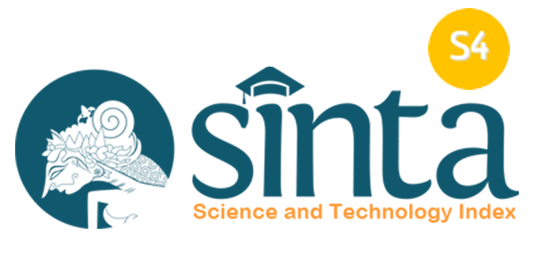Design and Development of 3-Dimensional Model of Human Circulatory System to Teach a Concept of Biology in Senior Secondary Schools
Abstract
Keywords
Full Text:
PDFReferences
Amadioha, S. W. (2009). The importance of instructional materials in our schools an overview. New Era Research Journal of Human, Educational and Sustainable Development, 2(3), 4-9.
Awolaju, B. A. (2016). Instructional materials as correlates of students’ academic performance in Biology in senior secondary schools in Osun State. International Journal of Information and Education Technology, 6(9), 705-709.
Ewetan, T. O., and Ewetan, O. O. (2015). Teachers' Teaching Experience and Academic Performance in Mathematics and English Language in Public Secondary Schools in Ogun State, Nigeria. International Journal of Humanities Social Sciences and Education , 2(2), 123-134.
Husain, S.S., Kadhim, M.Q., Al-Obaidi, A.S.M., Hasan, A.F., Humaidi, A.J., and Al Husaeni, D. N. (2023). Design of robust control for vehicle steer-by-wire system. Indonesian Journal of Science and Technology, 8(2), 197-216.
Muyoyeta, N. K., Abah, J., and Denuga, D. (2017). School Based Factors Affecting Grade 12 Learners' Academic Performance in Namibia Senior Secondary Certificate Ordinary Level Biology in the Khomas Educational Region, Namibia. International Journal of Education, Learning and Development , 5(7), 9-22.
Ogunlade, O. O., and Amosa, A. (2015). Effect of Audio Instructional Package on Basic Pupils' Performance in English Pronunciation Skills in Ilorin, Kwara State, Nigeria. Global Media Journal: Pakistan Edition, 8(1), 33-40.
Olumorin, C. O., Yusuf, A., Ajidagba, U. A., and Jekayinfa, A. A. (2010). Development of Instructional Materials from Local Resources for Art-Based Courses. Asian Journal of Information Technology , 9(2), 107-110.
Omorogbe, E., and Ewansiha, J. C. (2013). The Challenge of Effective Science Teaching in Nigerian Secondary Schools. Academic Journal of Interdisciplinary Studies , 2(7), 181-188.
Shahid, I., Noman, A.K., Farooq, S.H., and Arshad, A. (2019). Investigation of the adequacy of bridge design loads in Pakistan . Indonesian Journal of Science and Technology , 4(2), 171- 187.
Yoo , S. J., Spray , T., Austin III, E. H., Yun , T. J., and van Arsdell , G. S. (2017 ). Hands -on surgical training of congenital heart surgery using 3-dimensional print models . The Journal of Thoracic and Cardiovascular Surgery, 153(6), 1530-1540.
DOI: https://doi.org/10.17509/ijotis.v2i1.39006
Refbacks
- There are currently no refbacks.
Copyright (c) 1970 Universitas Pendidikan Indonesia

This work is licensed under a Creative Commons Attribution-ShareAlike 4.0 International License.
Indonesian Journal of Teaching in Science (IJoTIS) is published by Universitas Pendidikan Indonesia (UPI)
 Indonesian Journal of Teaching in Science
Indonesian Journal of Teaching in Science



